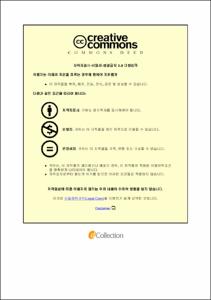Antibacterial and Anti-inflammatory Effect of Chitosan-phytochemical Conjugates against Acne-related Bacteria
- Alternative Title
- 여드름 균에 대한 Chitosan-phytochemical Conjugates의 항균 및 항염증 효과
- Abstract
- 여드름은 털 피지선샘 단위에서 생기는 만성 염증 질환으로 피지선이 모여있는 얼굴, 가슴, 목, 등에서 주로 발병한다. 여드름이 발생한 부위엔 다양한 피부변화가 발생하며 이에 따른 후유증으로 오목한 흉터 또는 확대된 흉터, 색소침착을 남기기도 한다. Propionibacterium acnes, Staphylococcus epidermidis, S. aureus, Pseudo¬monas aeruginosa등의 균들이 염증반응을 유발하는데 주된 역할을 하게 되므로 염증성 여드름의 치료에 항생제가 사용되고 있다 (Hughes et al., 1989). Triclosan, benzoyl peroxide, azelaic acid, retinoid, tetracycline, erythromycin, macrolide, lincomycin 등의 항생제가 사용되고 있으나 (Breathnach et al., 1984), 여러 부작용이 알려져 있다. 따라서, 많은 연구자들이 항균효과가 있으면서 부작용이 없는 여드름 치료제를 개발하려고 노력 중이다(Nam et al., 2003; Tan, 2003). 본 연구에서는 항산화, 항염증, 항암, 항균작용이 있다고 보고 된 천연 뮤코다당인 chitosan에 phytochemical을 conjugate 시킨 chitosan-phytochemical conjugates를 이용하여 여드름 유발균에 대한 항균활성을 비교 측정하였다. 이들 복합체는 chitosan보다 뛰어난 항균활성을 띄는 것으로 나타났으며 그 중 chitosan-caffeic acid에서 가장 높은 항균 활성을 나타났다. 다음으로, tetracycline, erythromycin 및 lincomycin 항생제에 대한 내성을 나타내는 P. acnes와 P. aeruginosa 균주를 대상으로 이들 항생제와 chitosan-caffeic acid 병용에 의한 항균활성의 변화를 측정하였다. 실험결과, chitosan-caffeic acid는 이들 항생제와 혼합 사용되었을 때 보다 강력한 항균 시너지 효과를 나타내었다. 이는 chitosan-caffeic acid가 P. acnes와 P. aeruginosa 균주들에 대한 이들 항생제의 감수성을 회복시키는데 기여하는 것으로 판단되었다.
P. acnes 균주는 여드름을 악화시키는 염증반응을 유도한다고 알려져 있다. 이에 본 연구에서는 각질형성 세포인 인간유래 HaCaT cell에 여드름균 감염에 의한 염증을 유도하고, chitosan-phytochemical conjugates의 항염증 효과에 대해 조사하였다. Chitosan-phytochemical conjugates는 대조구인 chitosan보다 뛰어난 항염증 활성을 나타내었으며 그 중 chitosan-caffeic acid가 가장 높은 항염증 활성을 나타내었다.
Chitosan-phytochemical conjugates 는 여드름을 유발하는 피부 병원성 세균에 대해 뛰어난 항균 활성뿐만 아니라 이들 세균에 의해 유도되는 염증에 대해서도 뛰어난 항염증 효과를 나타낸다. 즉, chitosan-phytochemical conjugates 가 향후 천연물 유래의 여드름 치료제 개발에 유용하게 이용 될 수 있을 것으로 기대된다.
- Issued Date
- 2016
- Awarded Date
- 2016. 2
- Type
- Dissertation
- Publisher
- 부경대학교 대학원
- Alternative Author(s)
- Ji Hoon Kim
- Affiliation
- 부경대학교 대학원
- Department
- 대학원 식품공학과
- Advisor
- 김영목
- Table Of Contents
- Contents
Contents i
List of Tables iii
List of Figures iv
Abstract v
Introduction 1
Materials and Methods 3
1. Materials 3
2. Preparation of chitosan-phytochemicals 3
3. Characterization of chitosan-phytochemical conjugates 4
4. Bacterial strains and culture conditions 6
5. Determination of minimum inhibitory concentration 8
6. Synergistic effect of chitosan-phytochemical conjugates with tetracycline, erythromycin and lincomycin against acne-related bacteria 8
7. Cell culture and cell viability assay 9
8. Measurement of nitirc oxide (NO) 10
Results and Discussion 12
1. Characterization of the chitosan-phytochemical conjugates 14
2. Determination of MIC of chitosan-phytochemical conjugates 16
3. Antibiotic resistance of acne-related bacteria against commercial antibiotics 19
4. Synergy effects between chitosan-caffeic acid and antibiotics against P. acnes and P. aeruginosa 22
5. NO production and cell ciability in HaCaT cells by P. acnes inoculation 28
6. Cell protective effect of chitosan-phytochemical conjugates against P. acnes 32
7. Inhibitory effect of chitosan-phytochemical conjugates on NO production in HaCaT cells treated by P. acnes 34
Conclusion 37
References 39
Acknowledgement 48
- Degree
- Master
- Files in This Item:
-
-
Download
 Antibacterial and Anti-inflammatory Effect of Chitosan-phytochemical Conjugates against Acne-related.pdf
기타 데이터 / 1.4 MB / Adobe PDF
Antibacterial and Anti-inflammatory Effect of Chitosan-phytochemical Conjugates against Acne-related.pdf
기타 데이터 / 1.4 MB / Adobe PDF
-
Items in Repository are protected by copyright, with all rights reserved, unless otherwise indicated.